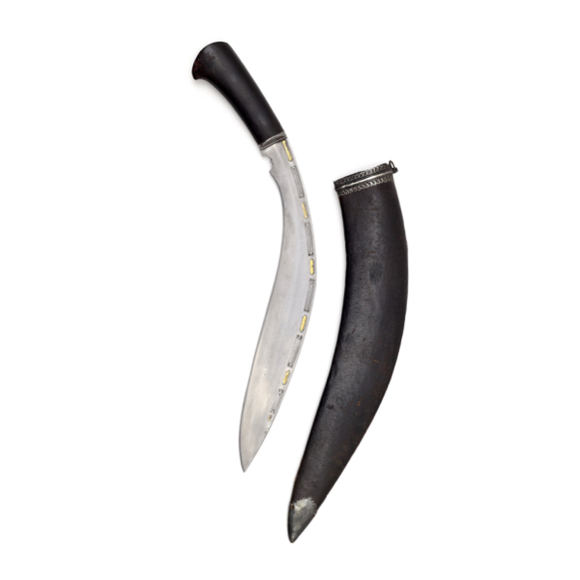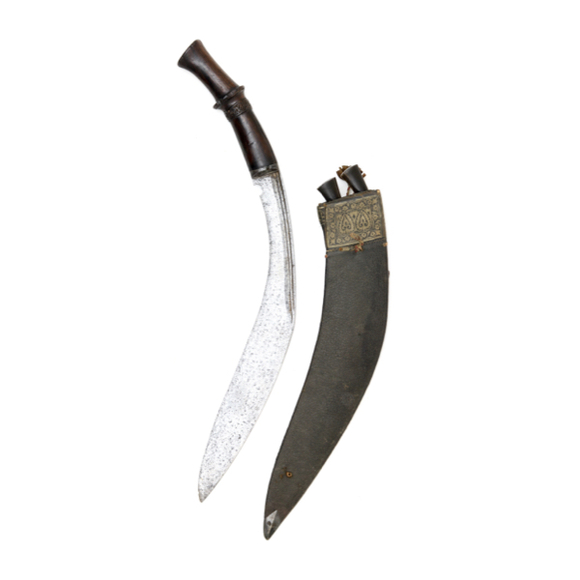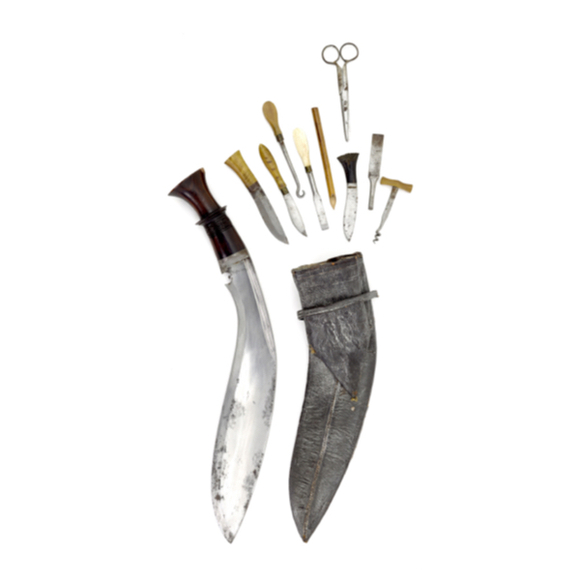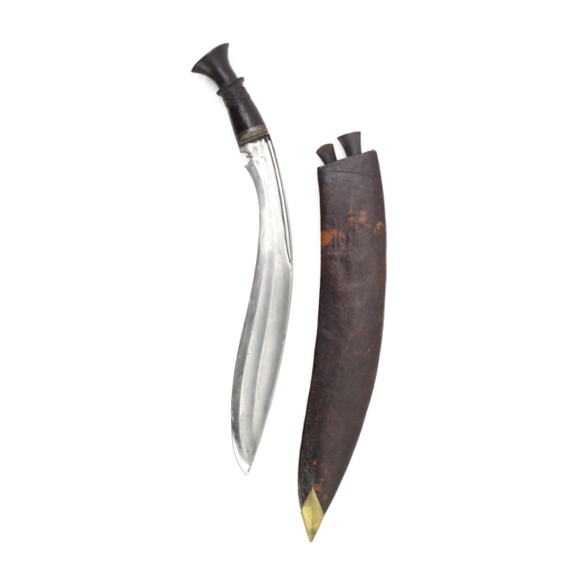Russet iron, one-piece construction with decorative grooves.

98.5 cm / 38.8 inch
79.5 cm / 31.3 inch
forte 6 mm
middle 5 mm
near tip 4 mm
forte 37 mm
middle 33 mm
near tip 28 mm
1041 grams
17.8 cm from guard (grip side)
China
Steel, baitong, wood, stingray skin.
Early 20th century.
Description
A large and rather interesting Chinese jian dating from the Chinese Republican period. This is the time where many Chinese martial arts developed the forms in which we know them today. Several types were still in production at the time, most of them made purely for martial arts training as European firearms were now well-established on the battlefields. The majority of these post-Qing manufactured jian were rather light, often with blades made of steel that was not hardened. This is not to say decent jian weren't produced anymore, there are some rare examples known of republican jian with excellent blades, differentially heat-treated and well-hardened.
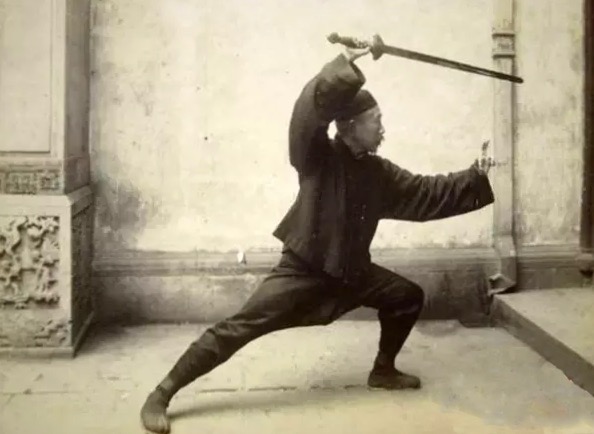
Chen Weiming (陳微明) wielding a very similar jian in 1929.
From: Chen Wei-Ming's Compendium on Taiji Sword.
This jian is part of that group of better made Republican jian, made of quality steel that hums gently when you hit the hilt. The construction methods can't be seen in the current condition but hints here and there along the edge suggest it's forge folded, and of sanmei construction with a high-carbon edge plate between layers of tougher steel. It has a nice, resilient temper indicative of proper heat treated steel.
Blade decor
Etching was common on republican jian, but this piece presents a type of etching I have never seen before. It covers the entire blade, creating a serrated border along the edges. The center of the blade exhibits a whirling pattern that never repeats itself. It is almost as if with the etching, an attempt was made to emulate the look of some of the most elaborate forging methods used in the Qing dynasty: a combination of machi (馬齒) "horse tooth" and huawengang (花文剛) or "twistcore pattern welding". See:
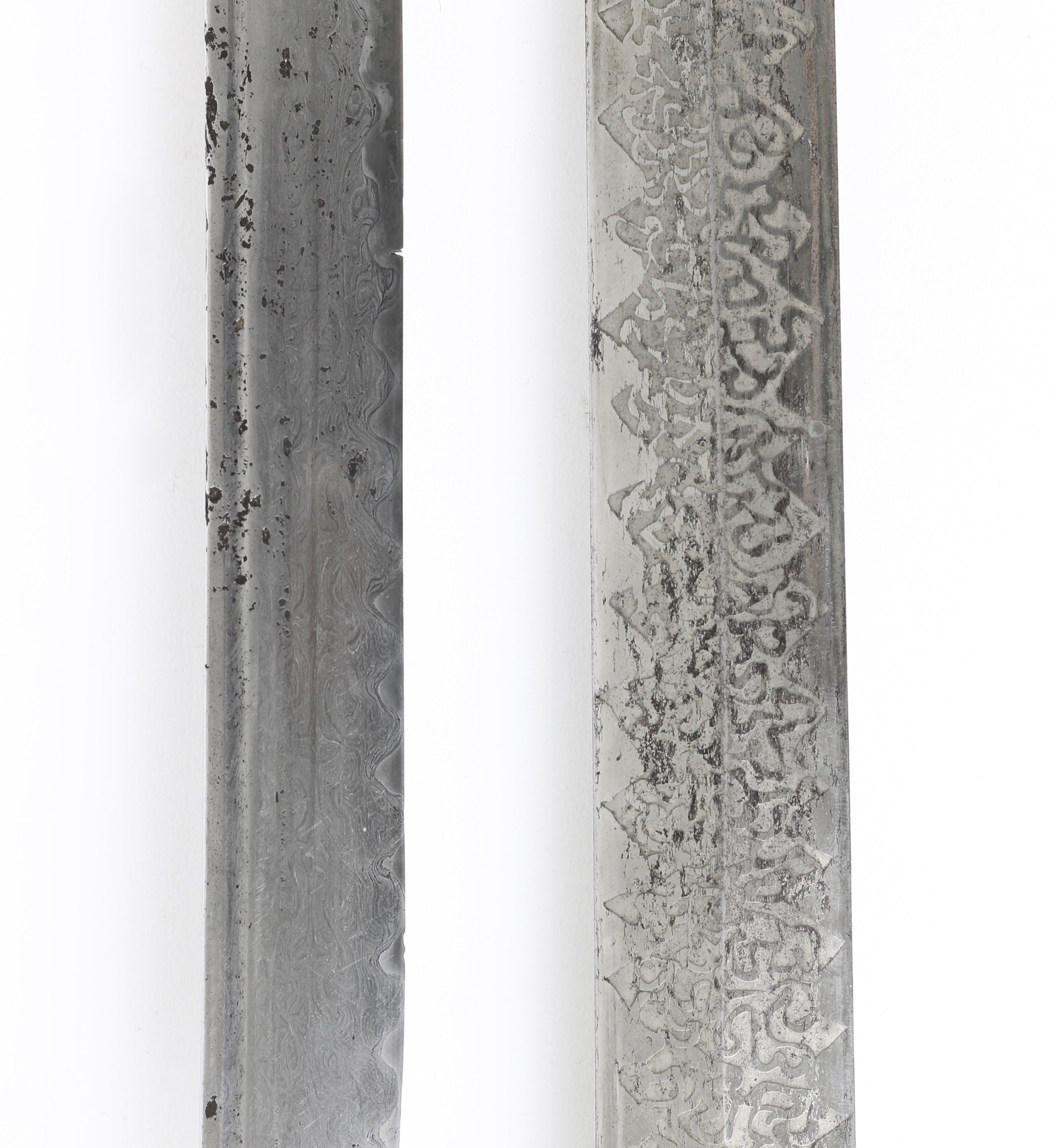
Left: A Qing dynasty saber with exceedingly rare horse tooth / twistcore blade.
Right: This etched Republican jian.
The design also incorporates a cartouche at the forte on one side. It seems to contain some characters, but so stylized that I cannot decipher them:
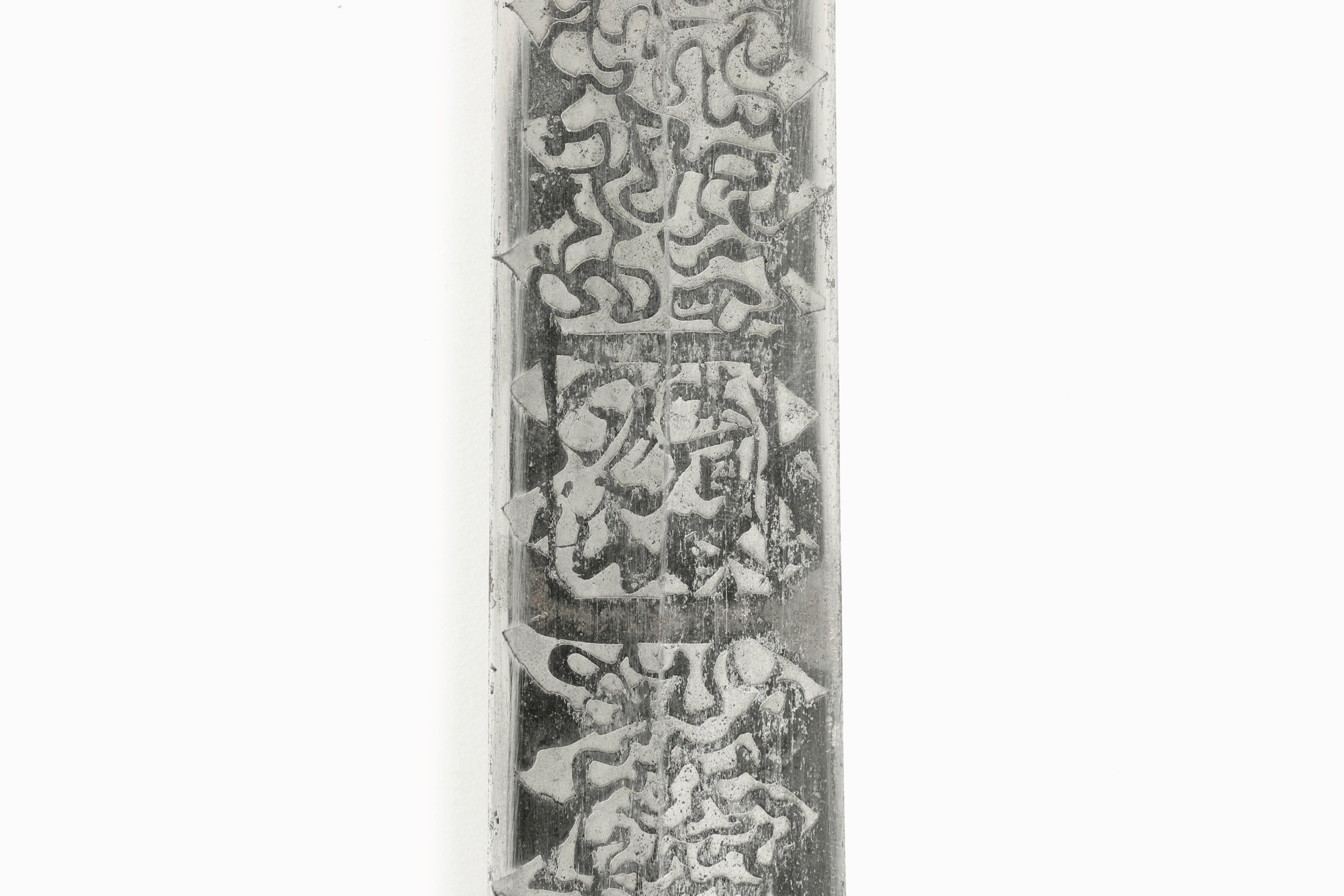
Cartouche on the forte of this sword's blade
It also appears as if here and there in the design there are some hidden characters. There is perhaps more to it than only the imitation of expensive pattern welded steel.
Mounting
It comes mounted with fittings of classic form, in thick gauge of "nickel-silver", called baitong (白銅), also known as baktong in the Cantonese dialect. This material is an alloy of copper, nickel and zinc that is thought to have been used by the Chinese as early as the 10th century A.D., when it was naturally found in Yunnan. It were eventually the Germans that managed to produce it in quantity, today it's often known as "German silver". The wooden handle is covered with raw ray-skin for excellent grip. The scabbard is covered with polished emerald green ray-skin.
Condition
Some minor friction in the handle and some movement in the pommel. Some staining on the blade, but hardly any putting. In pretty good condition throughout. No losses to the ray skin. It only has two scabbard fittings and no suspension system but this, too was common on Republican period jian because they were not worn anymore. (Also see our Republican duanjian that was "born" with only two scabbard mounts.)
An interesting, and rather unusual late Chinese straightsword that seemed to use new techniques to bring back old patterns on steel.
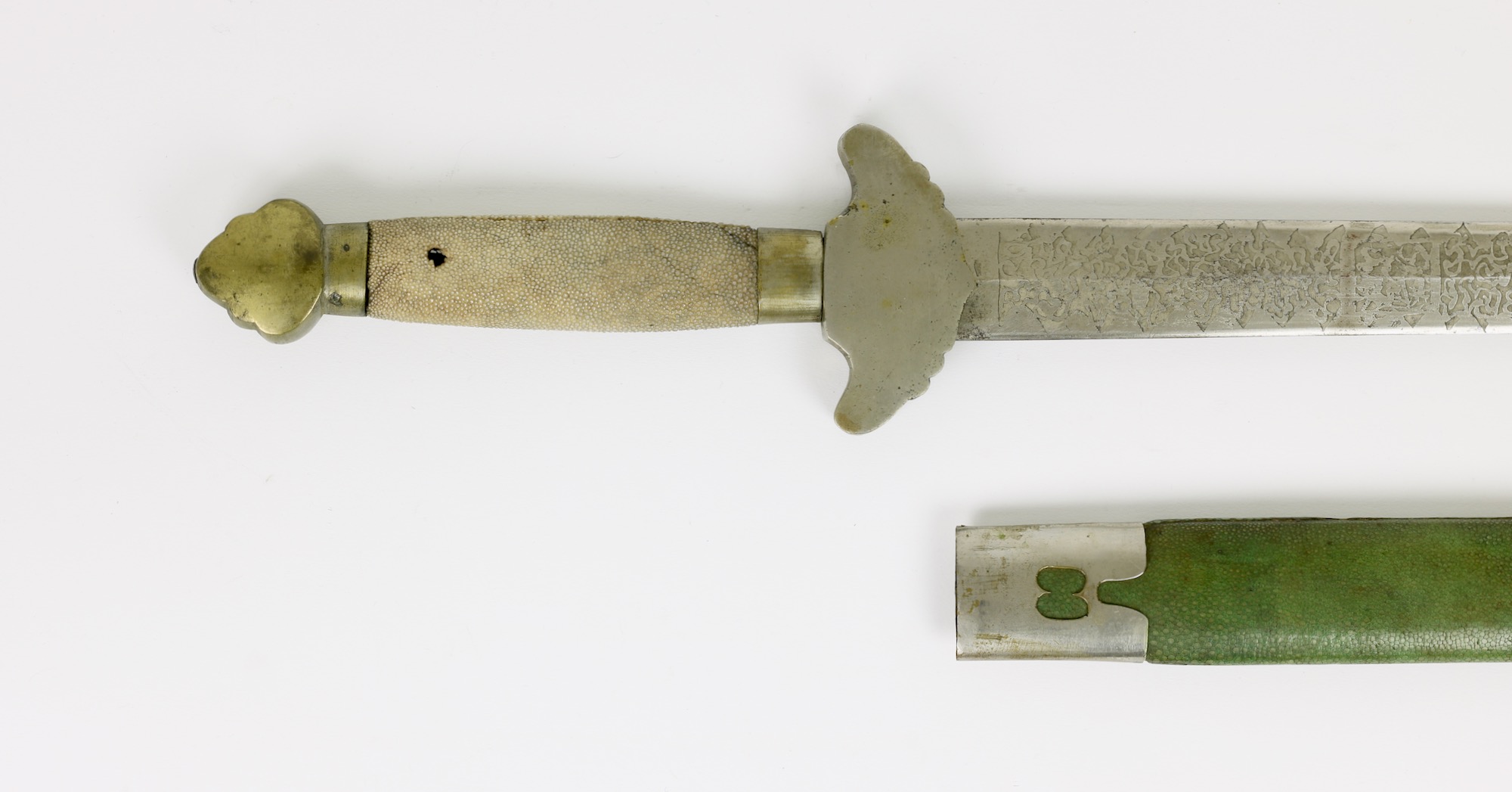
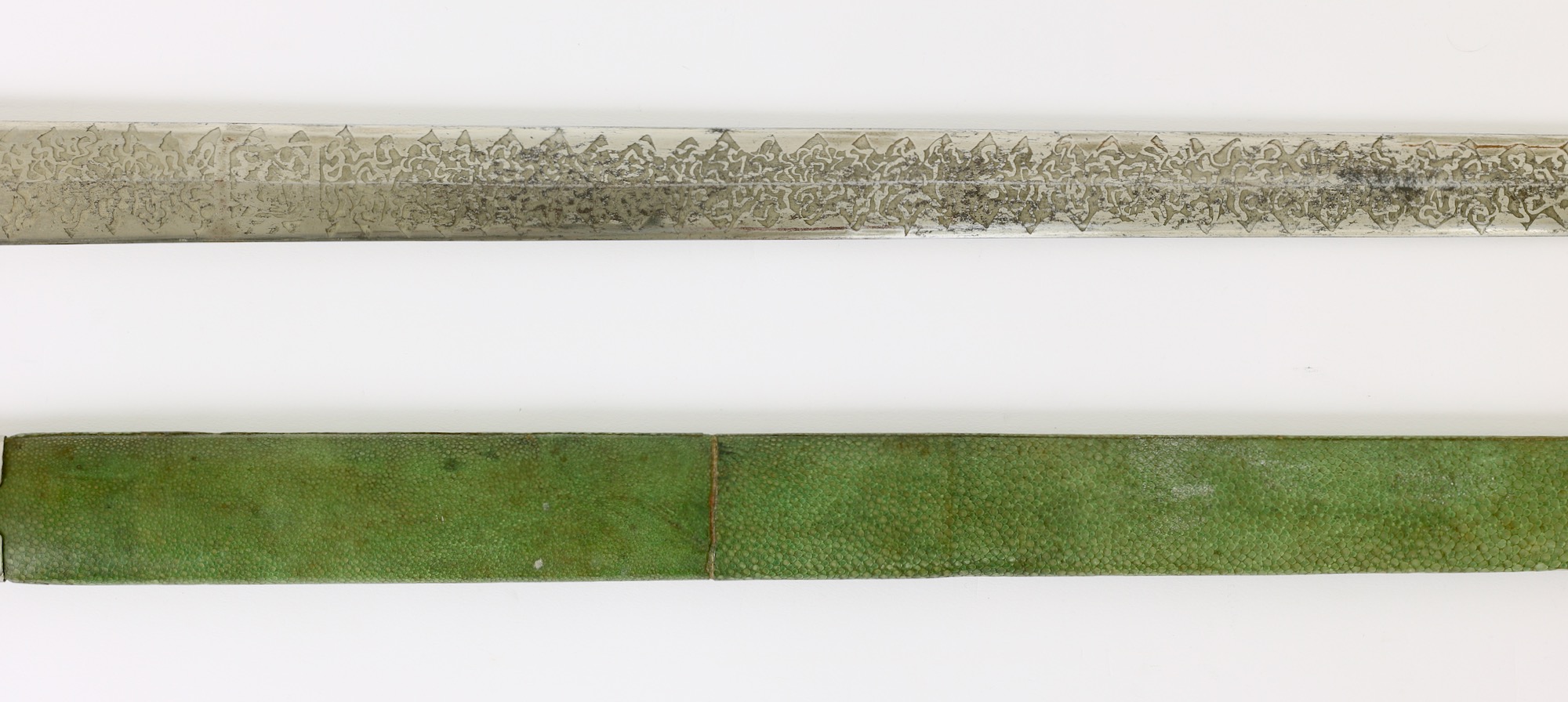
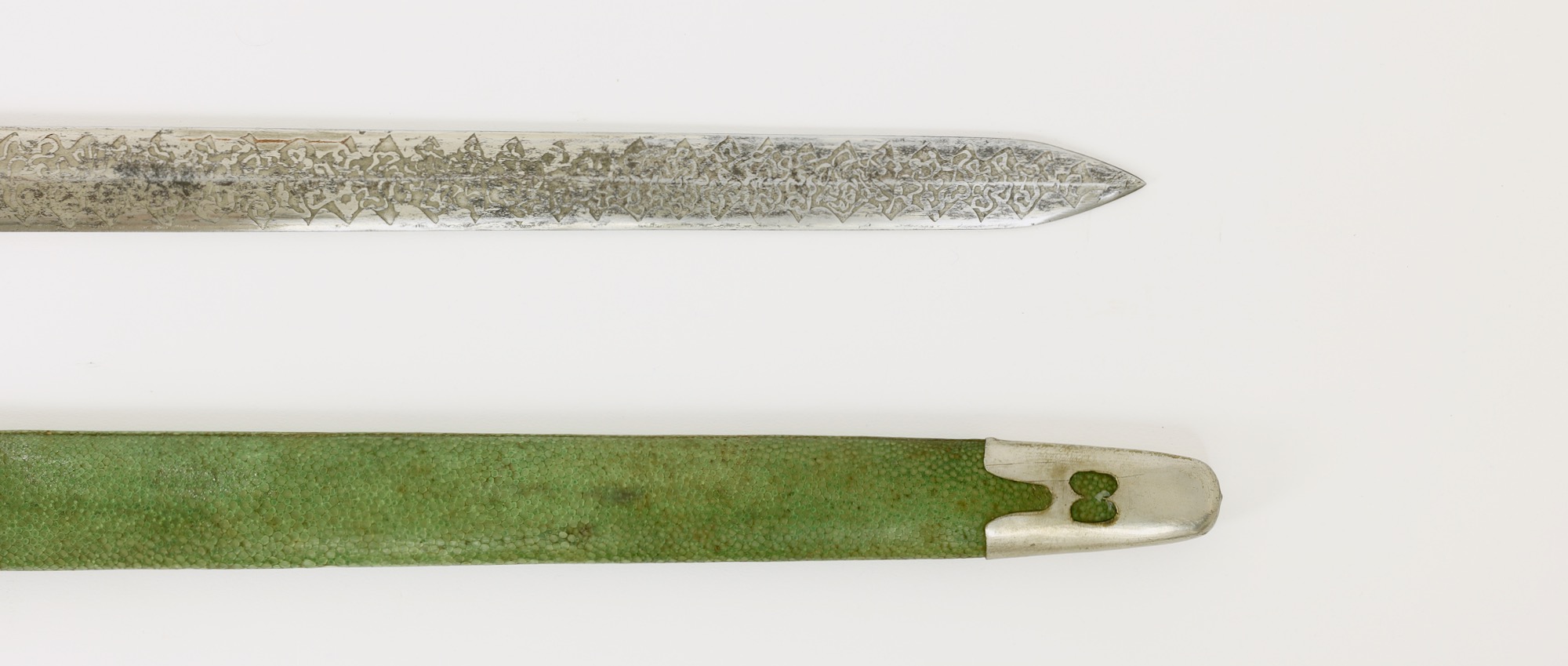

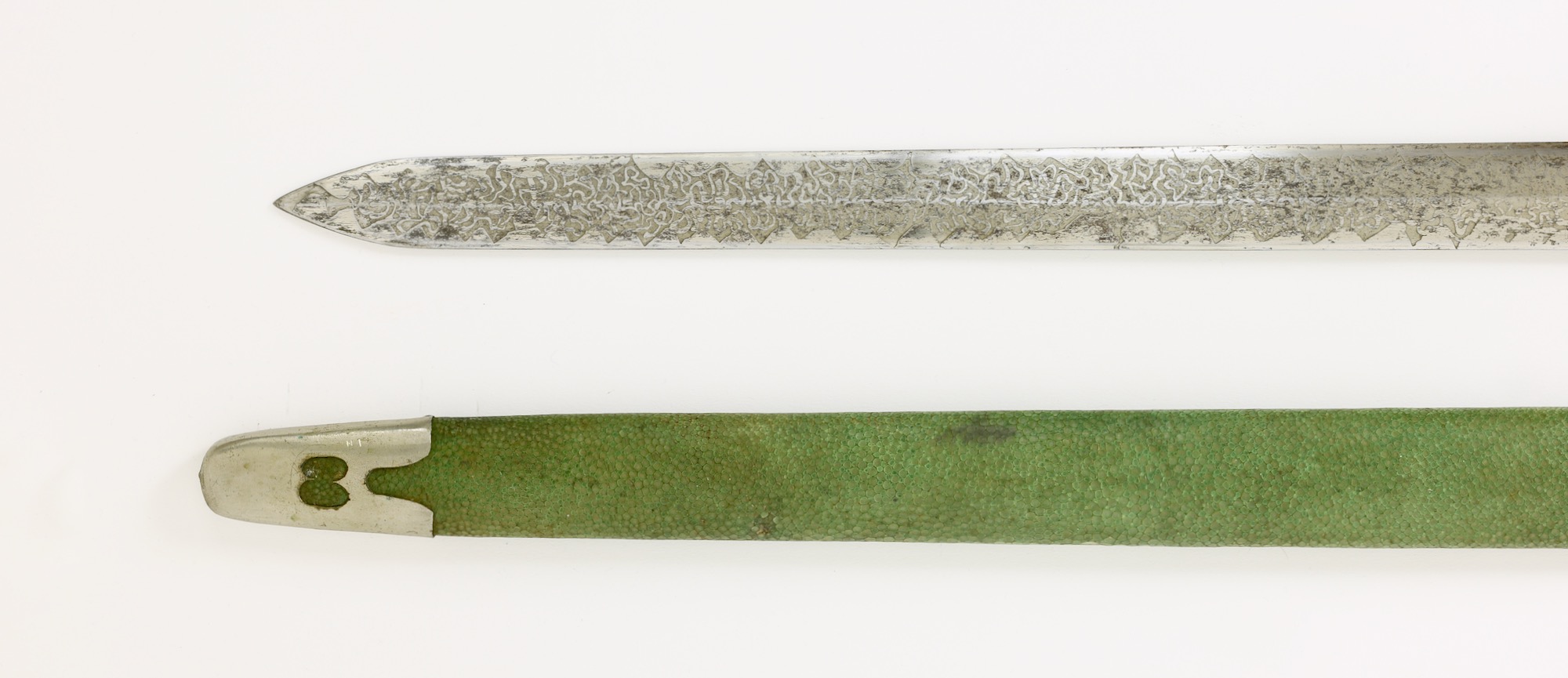
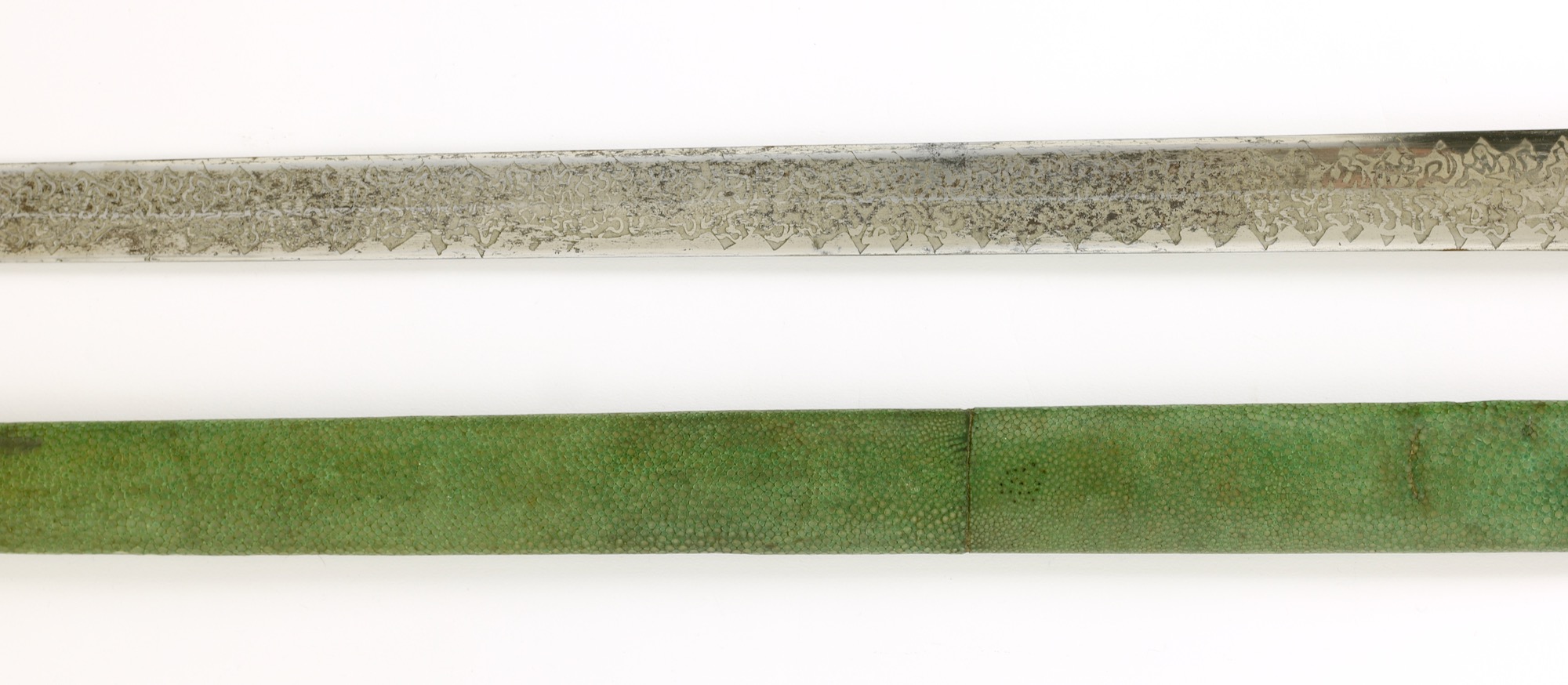
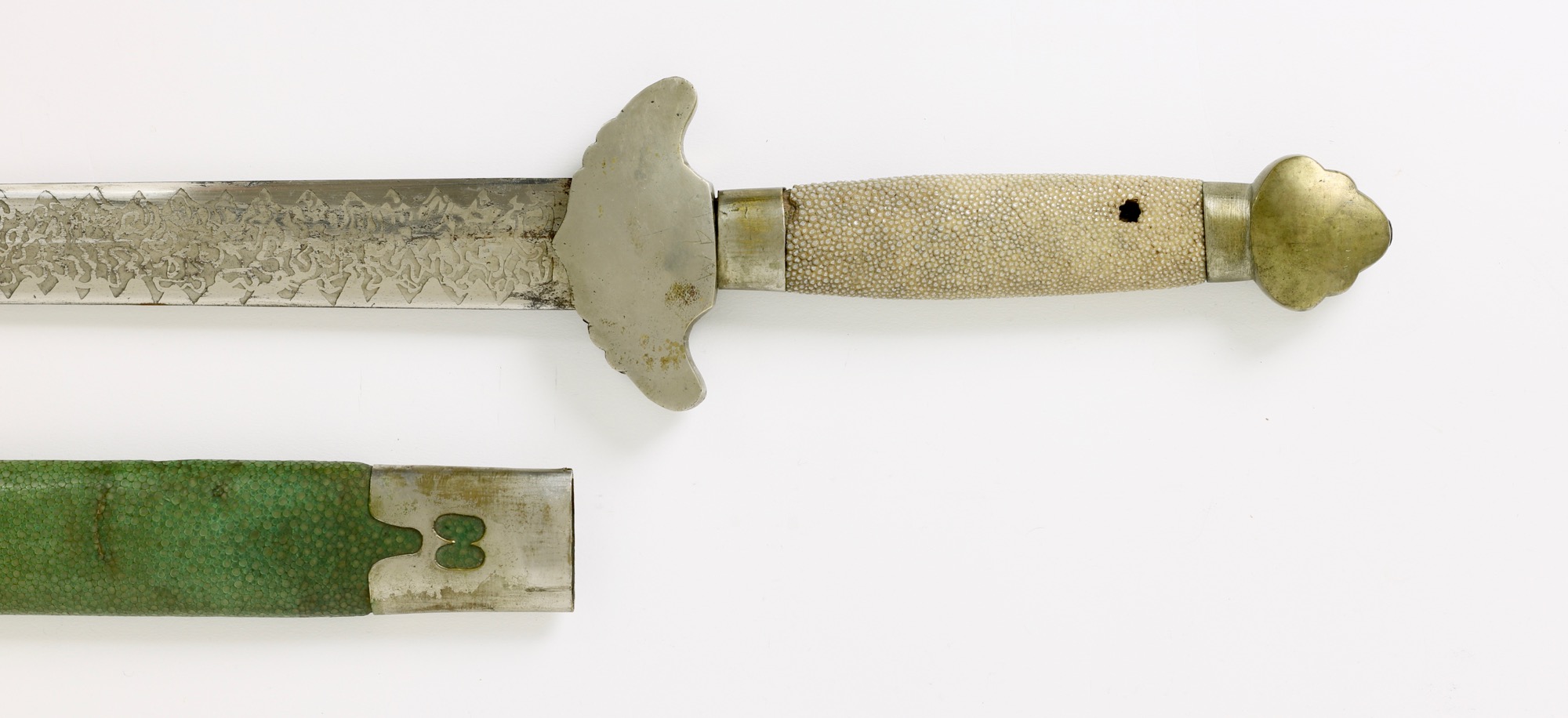
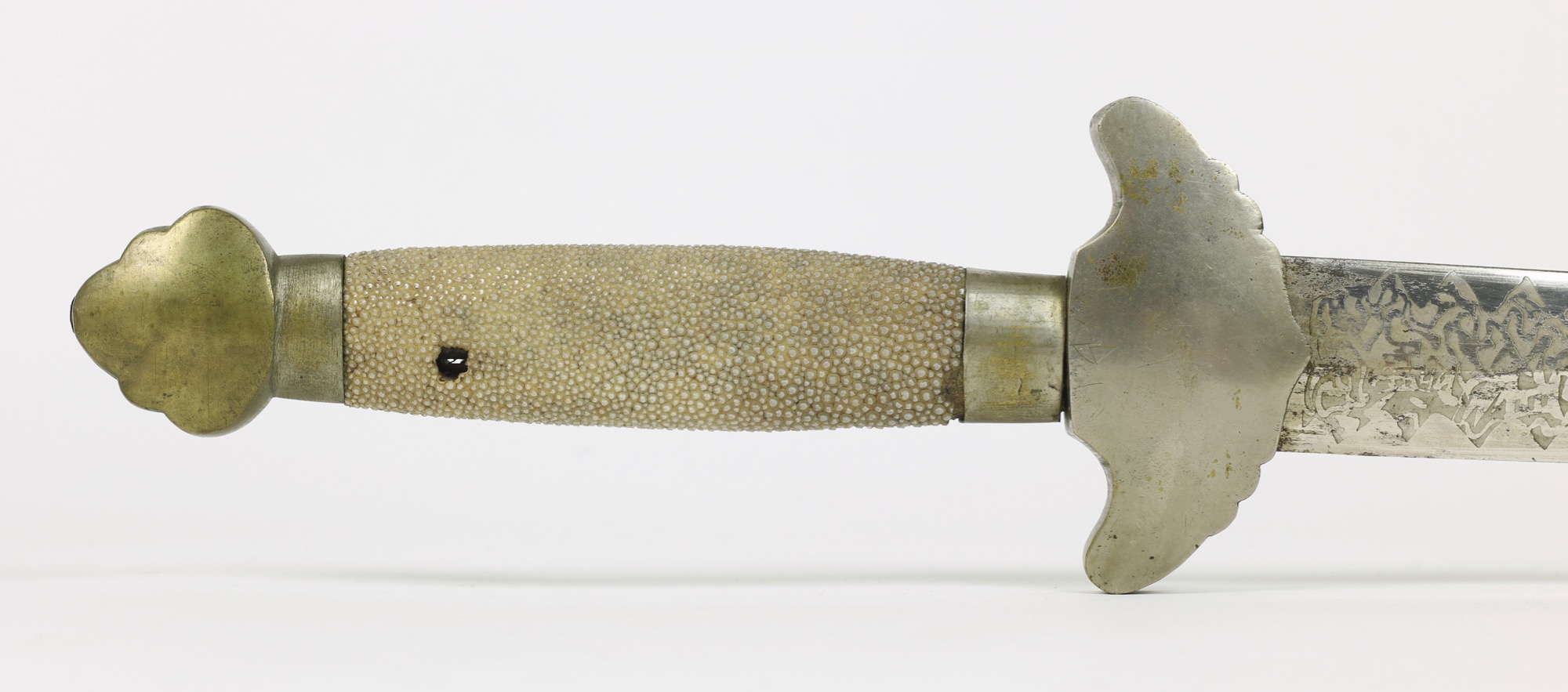
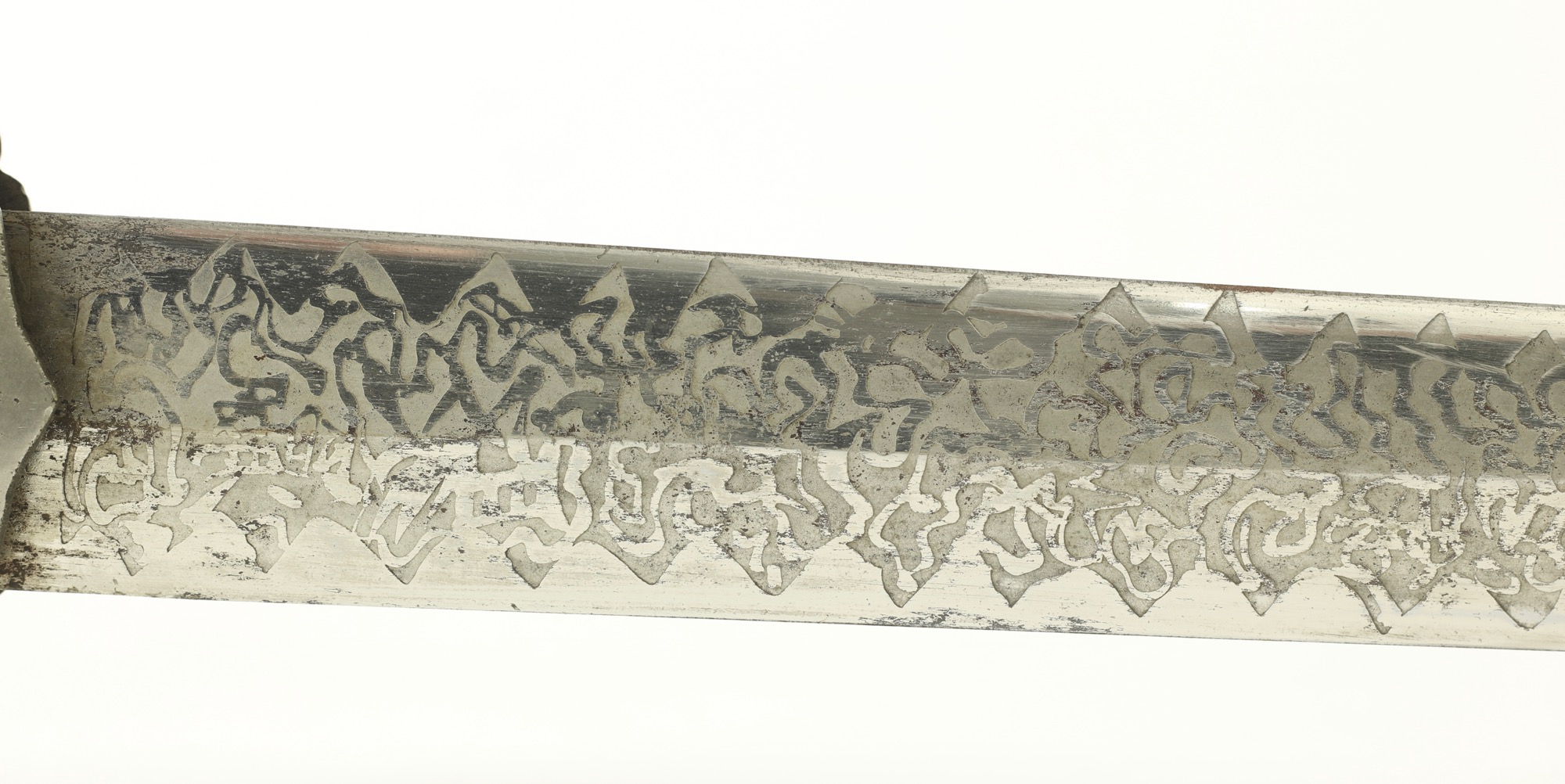
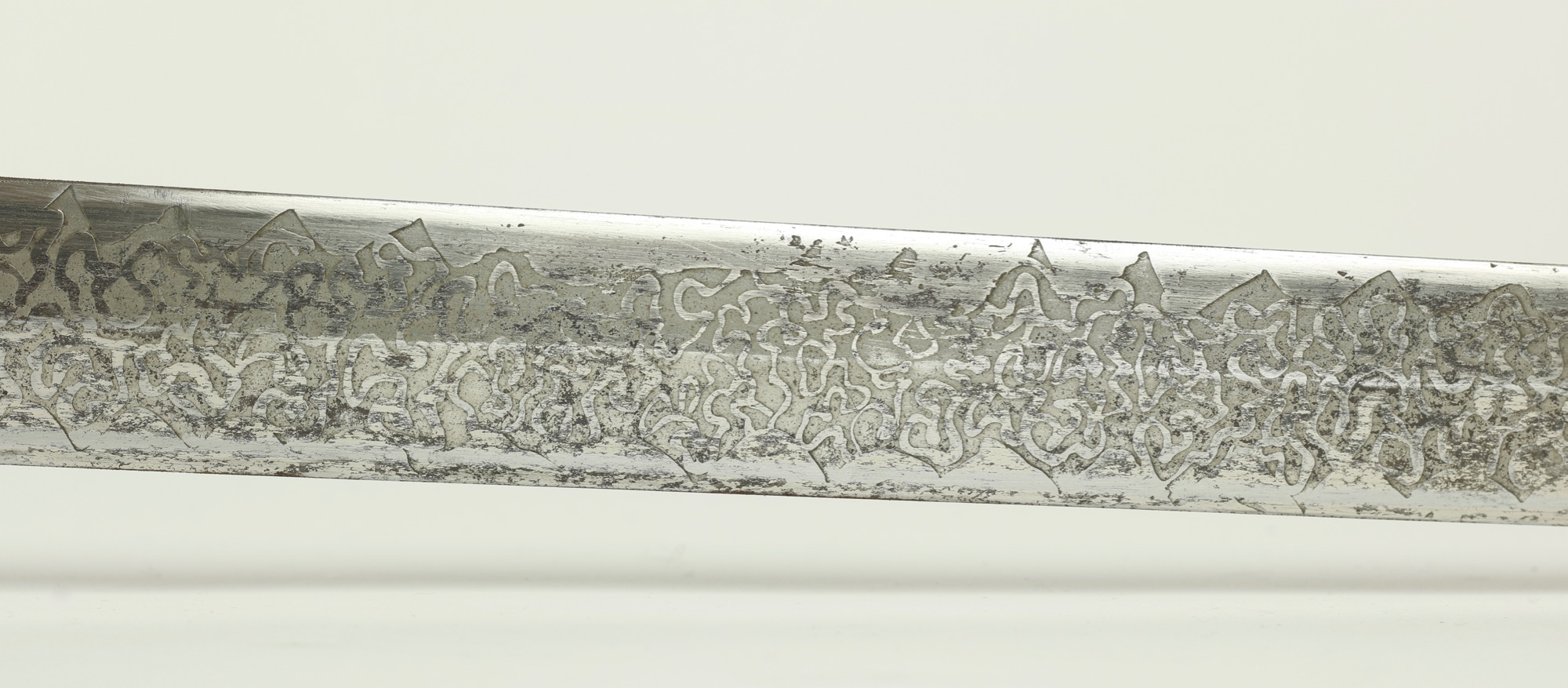
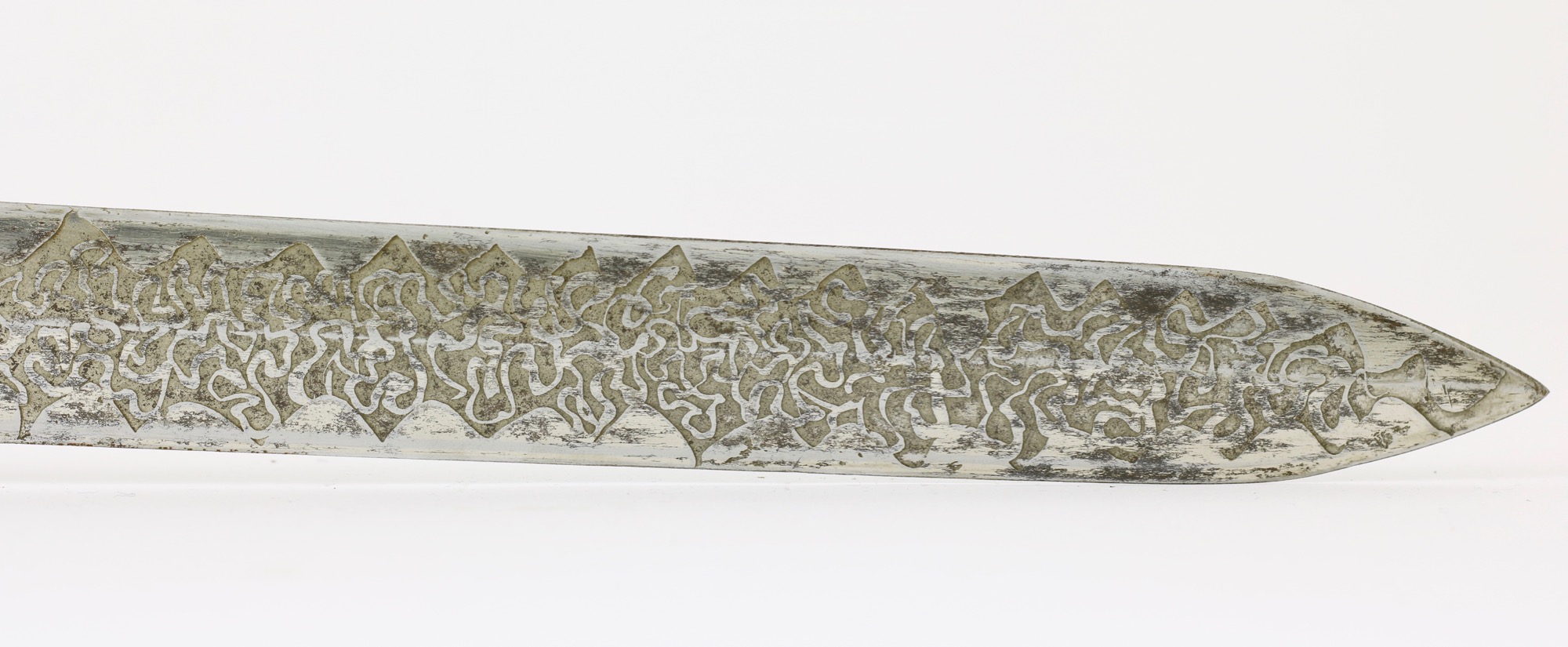
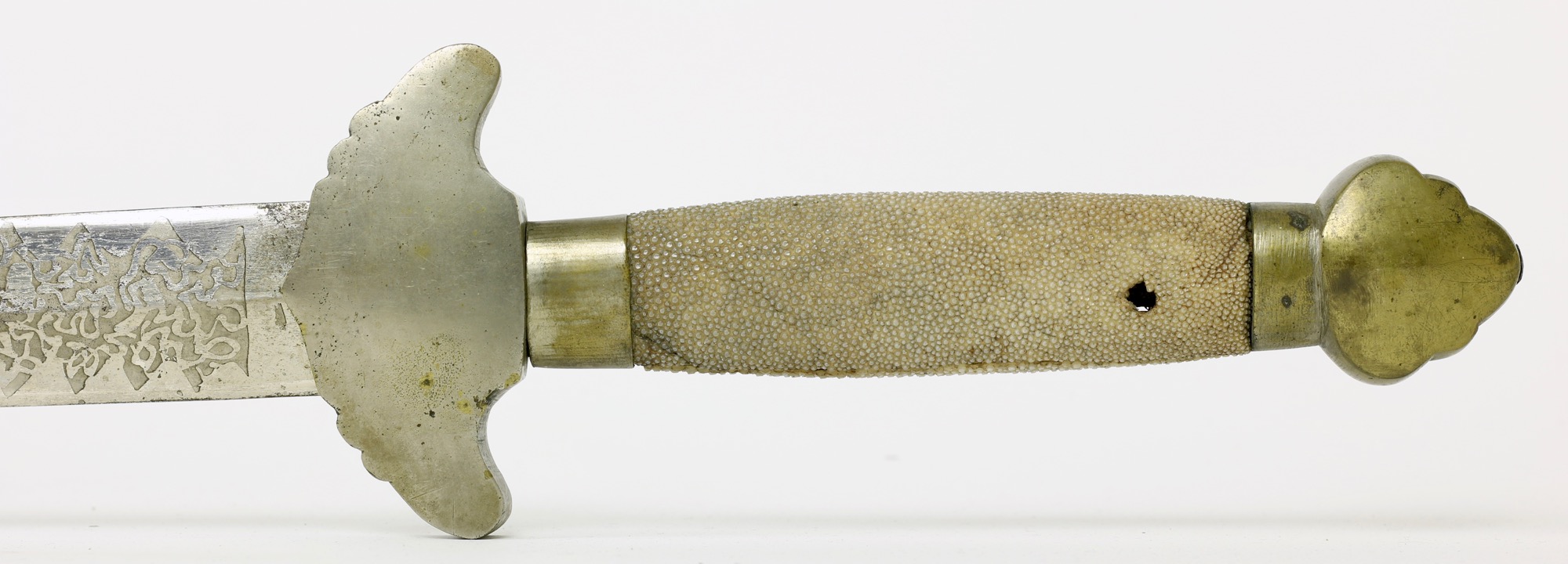
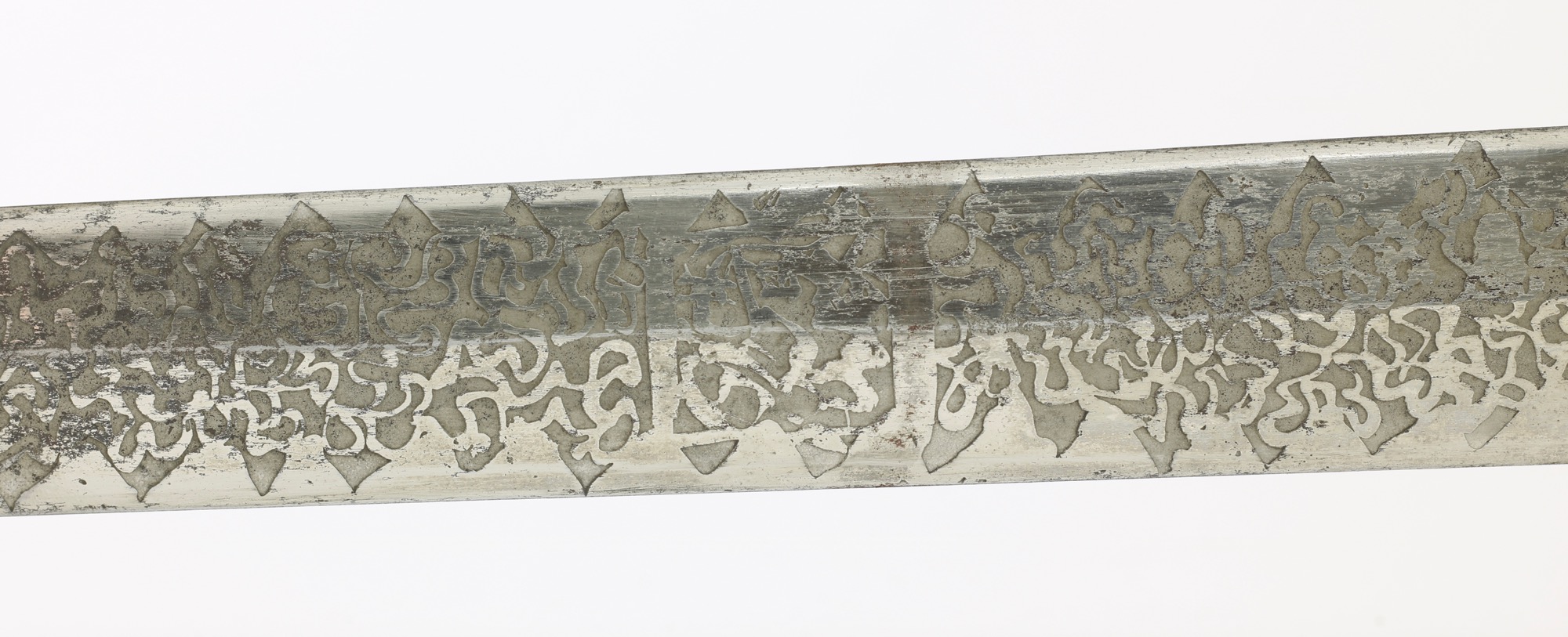
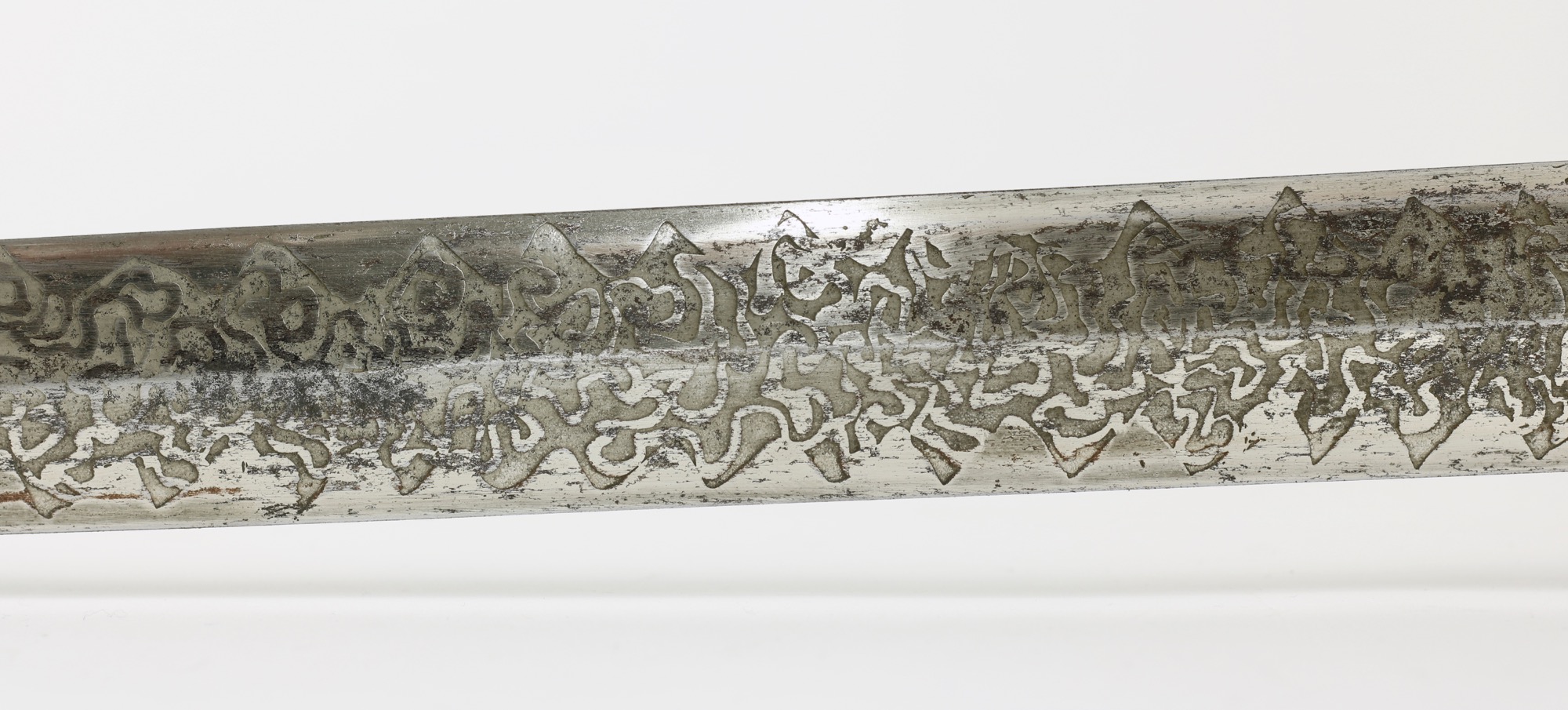
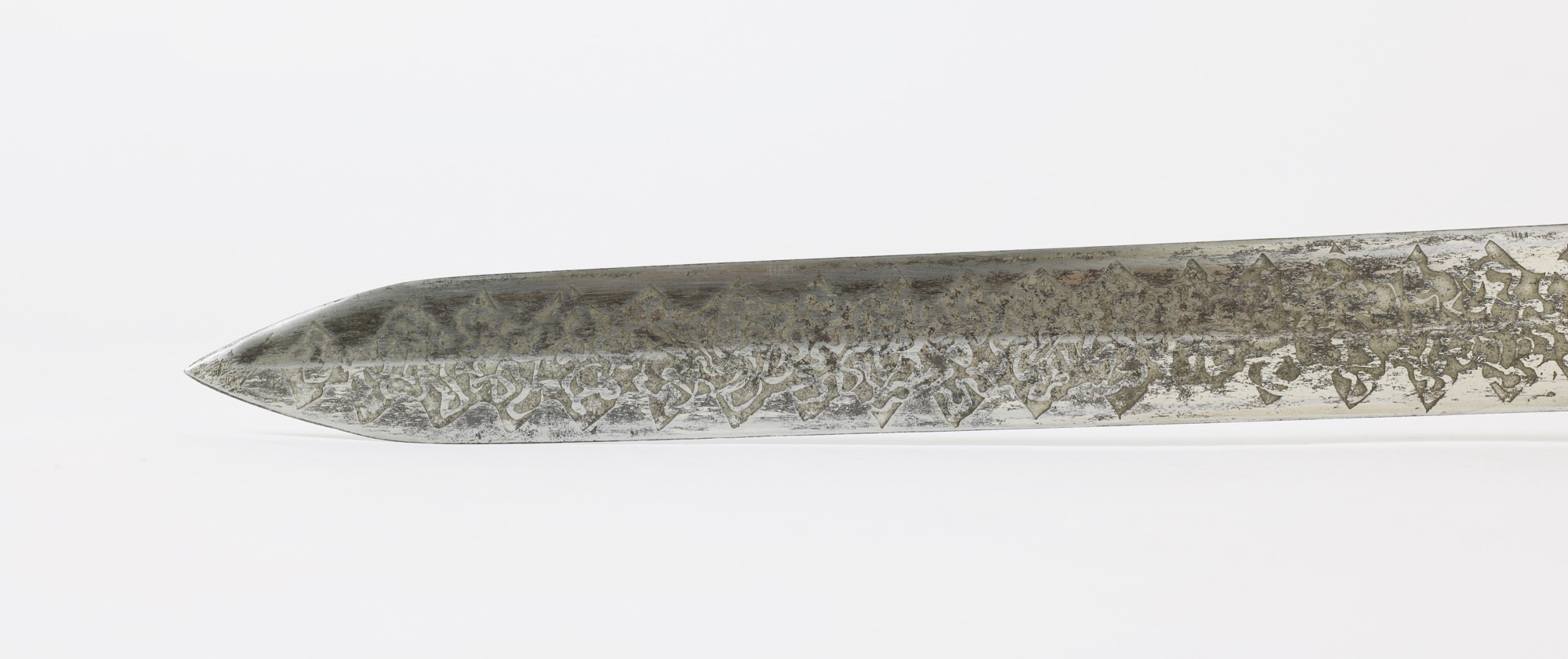
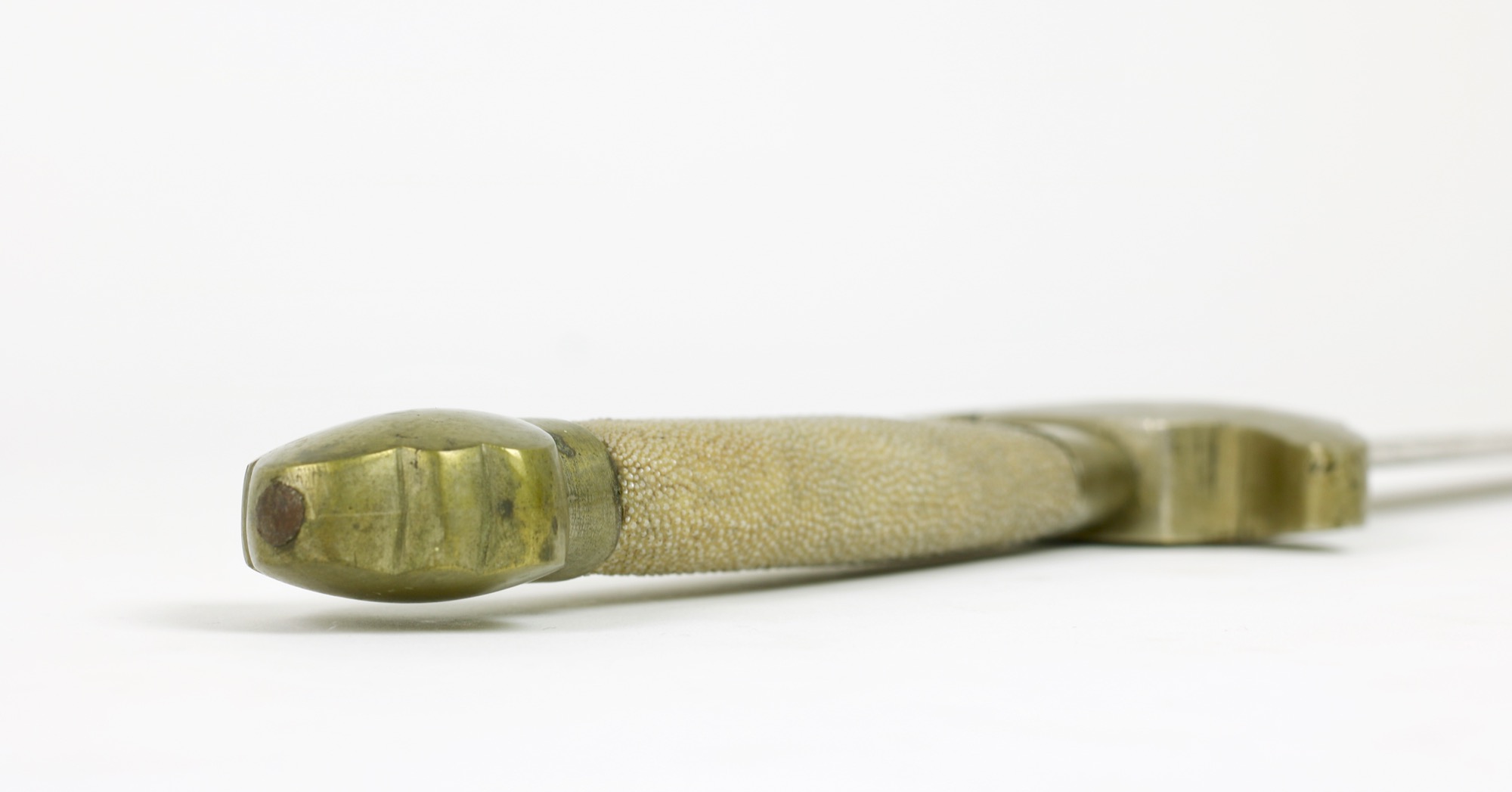
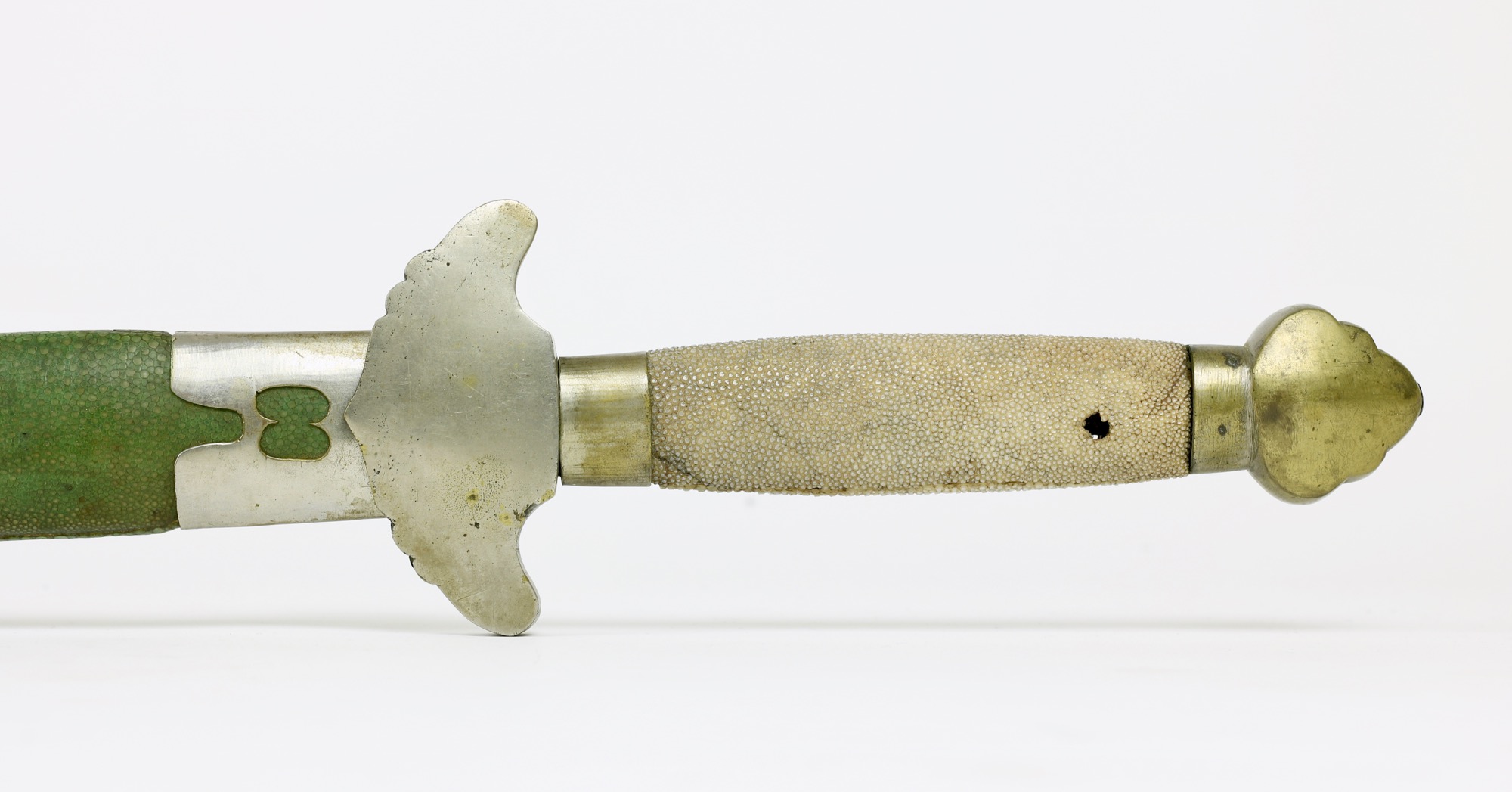
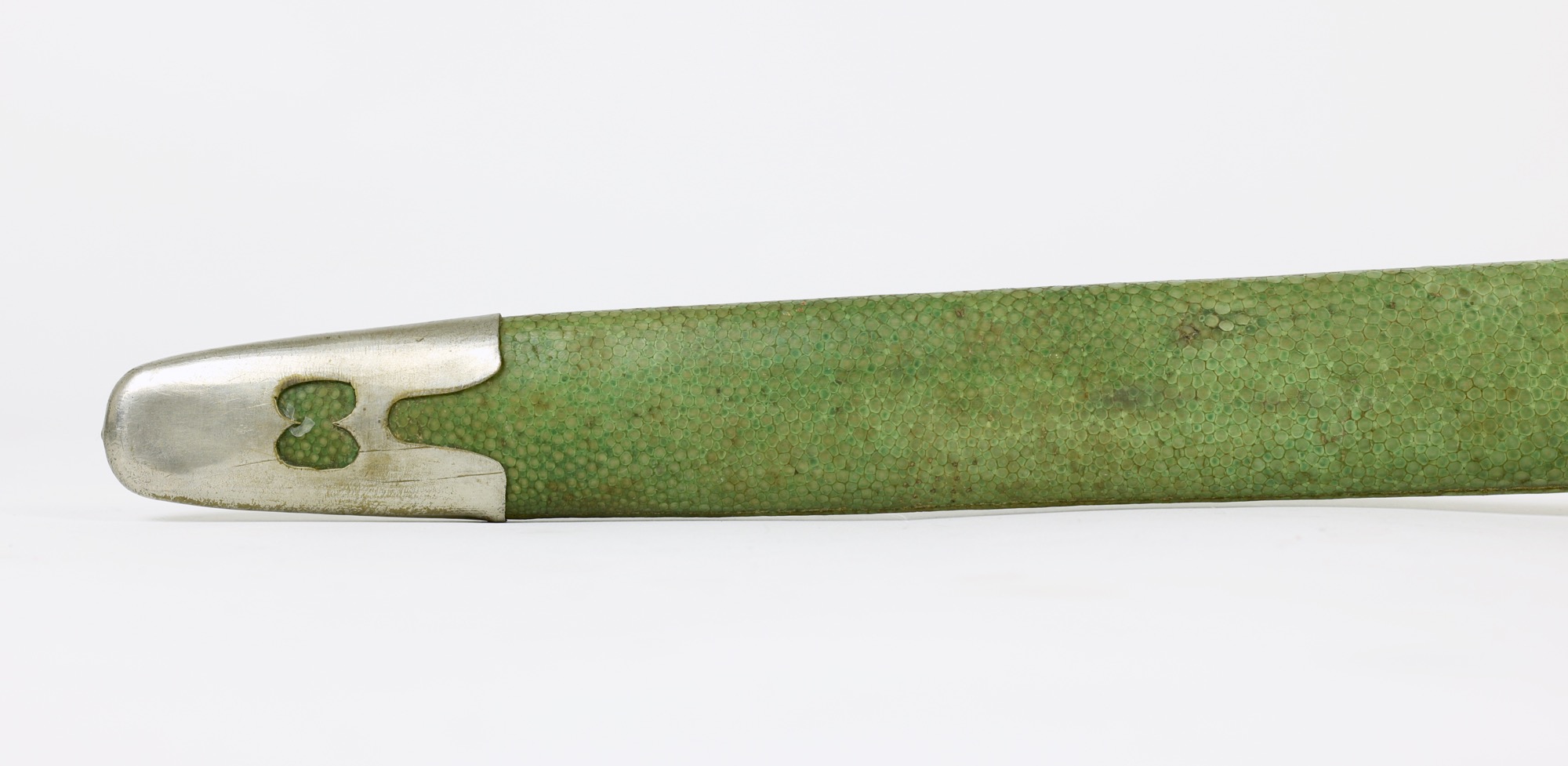

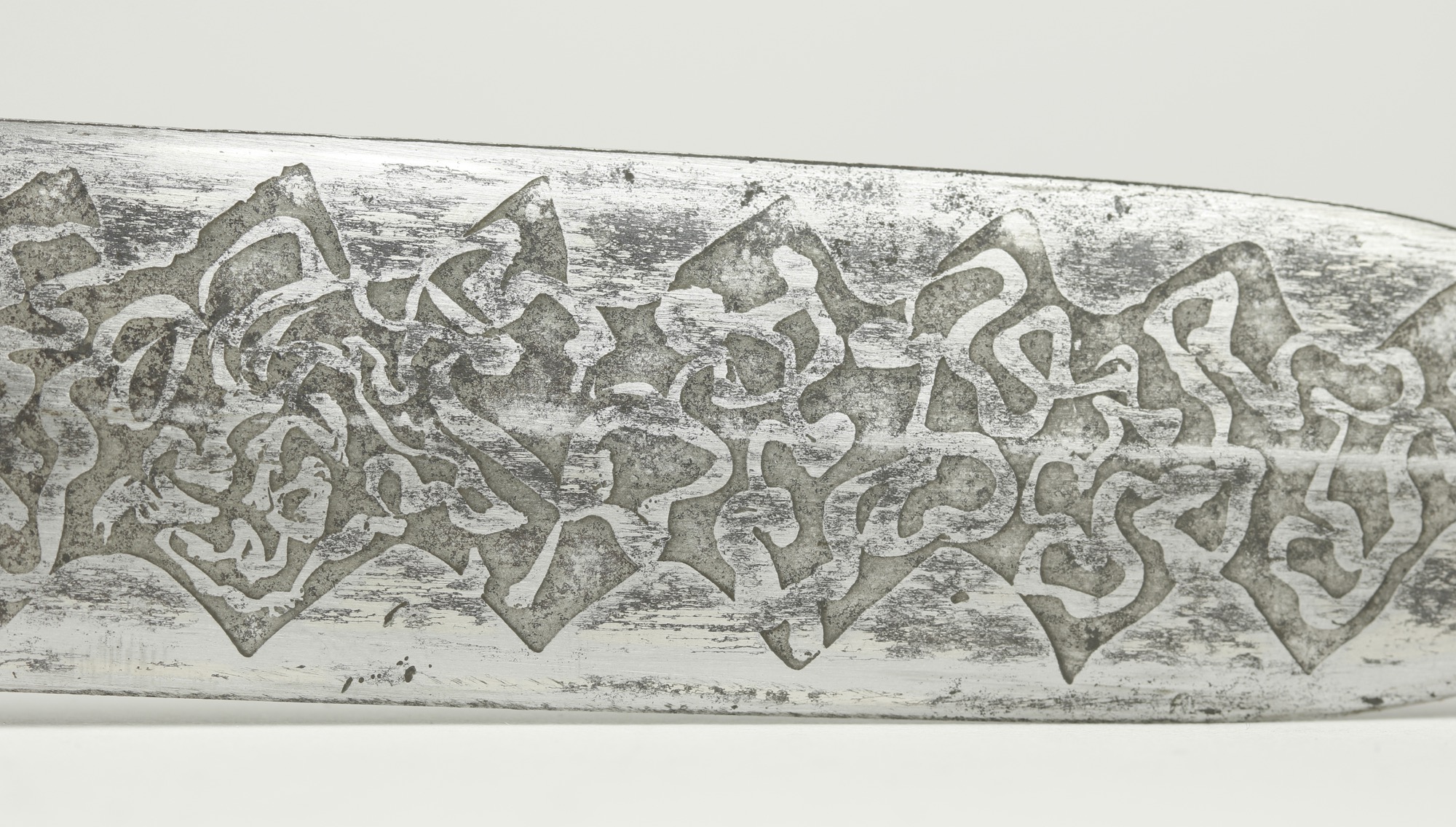
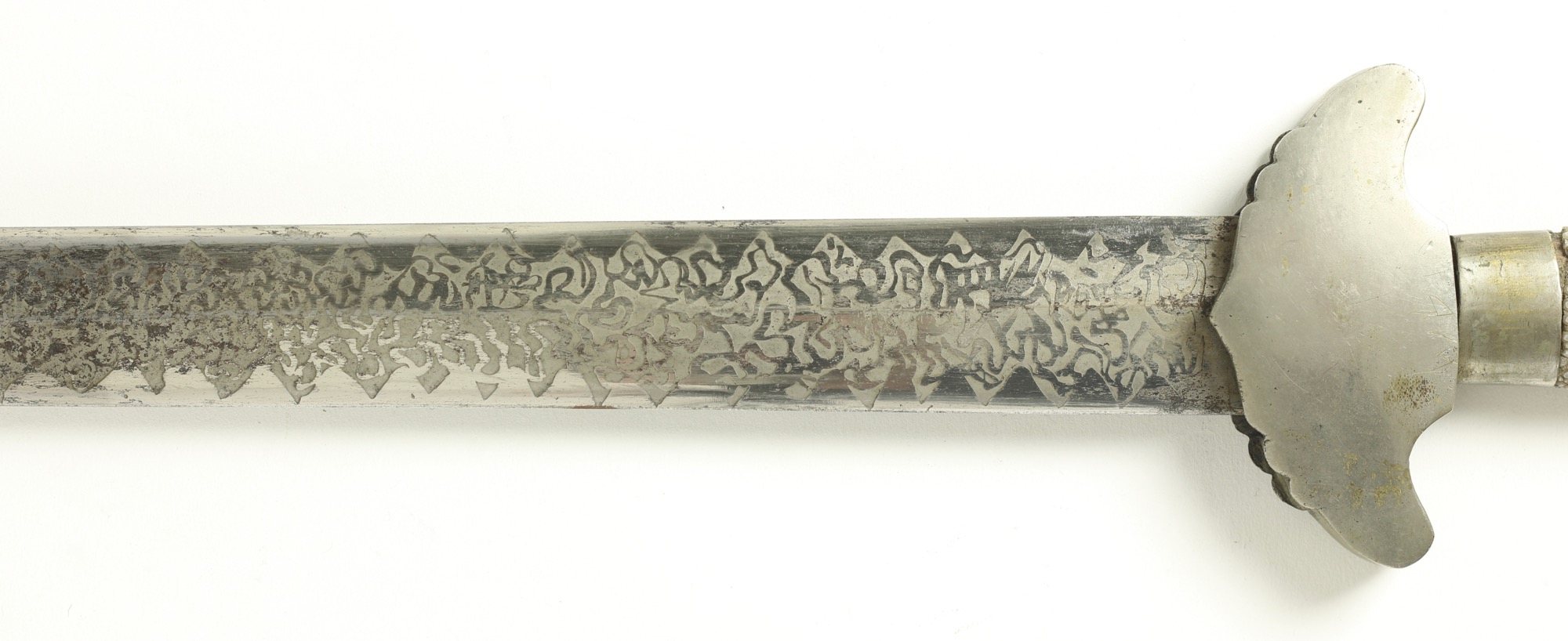
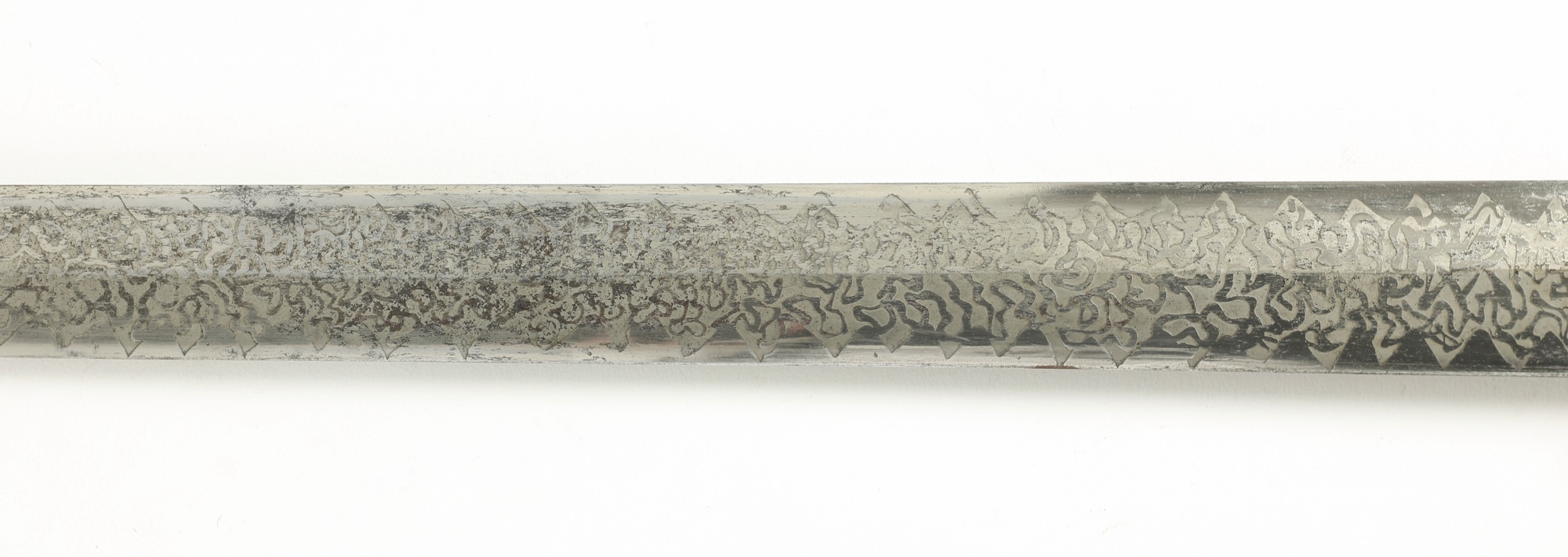
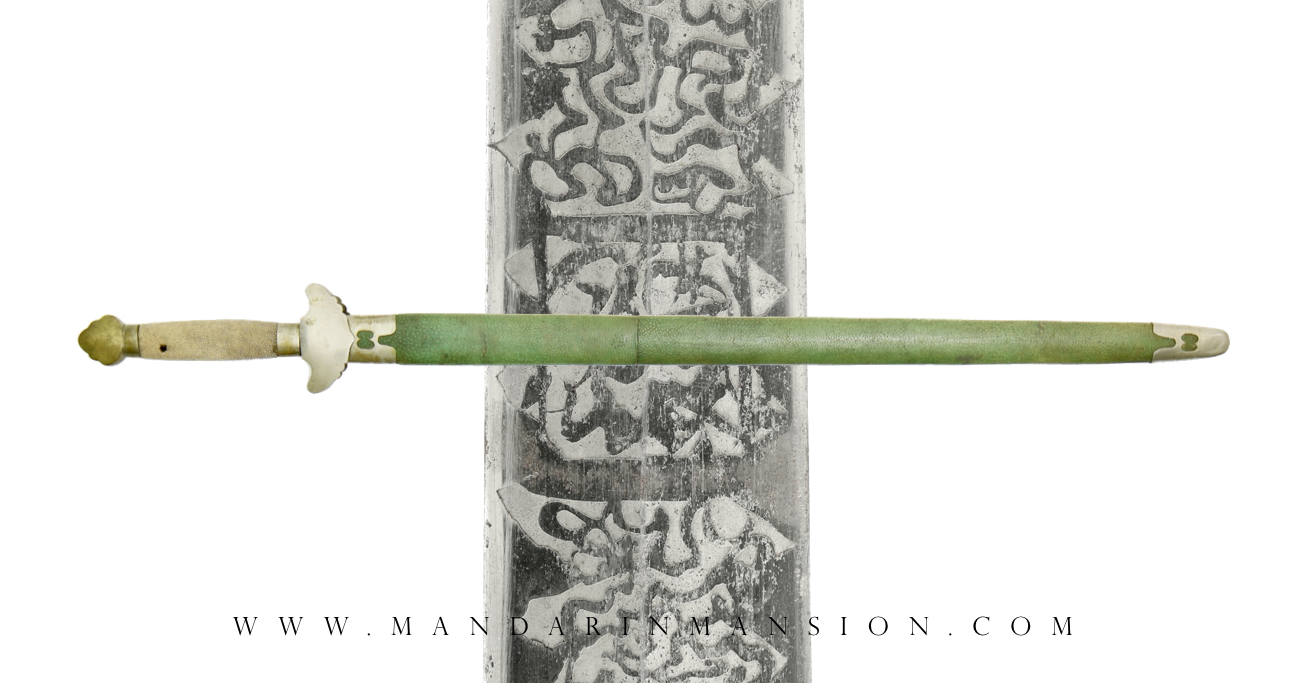
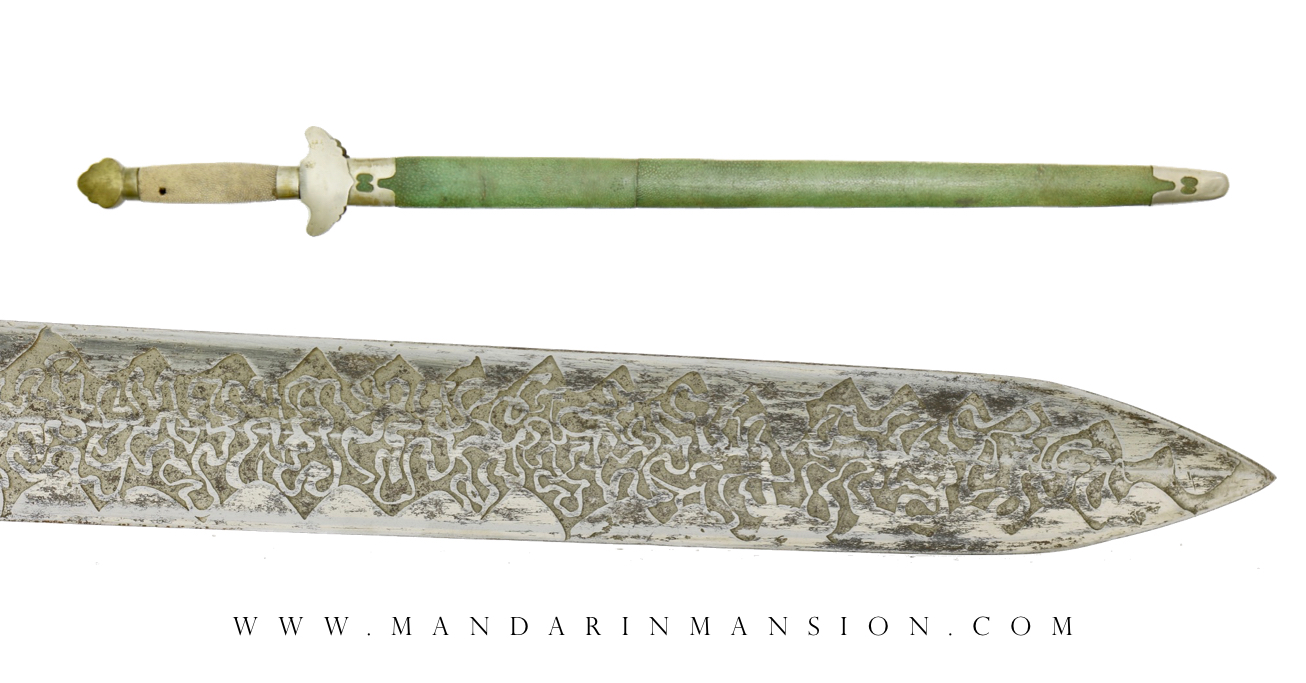
With a very fine Nepalese blade, but kard-like hilt and scabbard.
Early type with very shallow notch in the blade and little flare in the pommel.
20th century military khukurī with many different tools in its back pocket.



